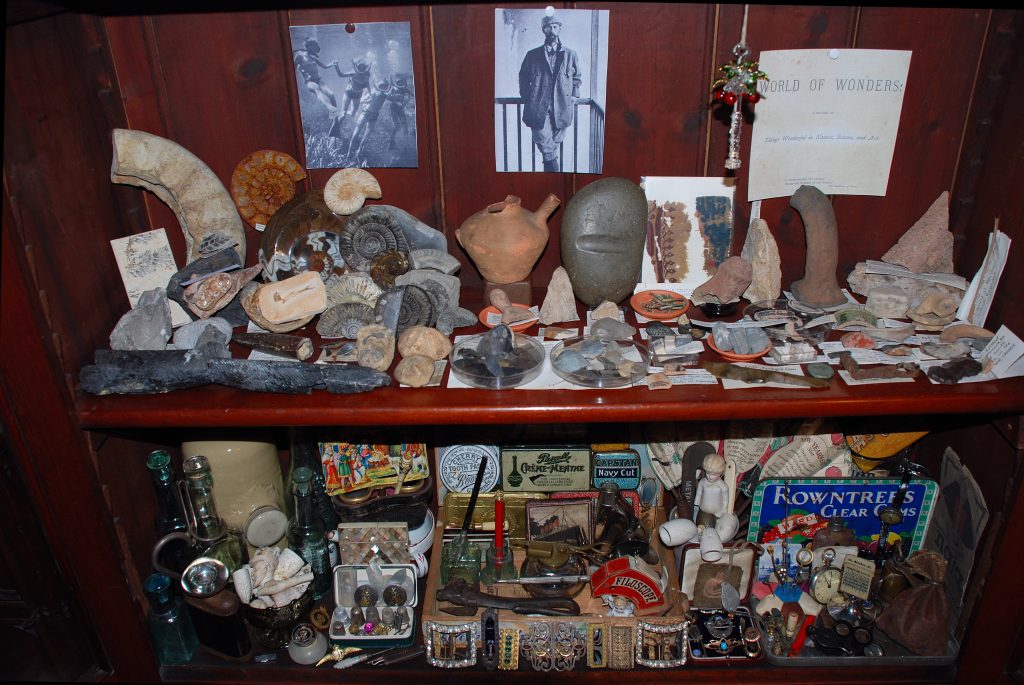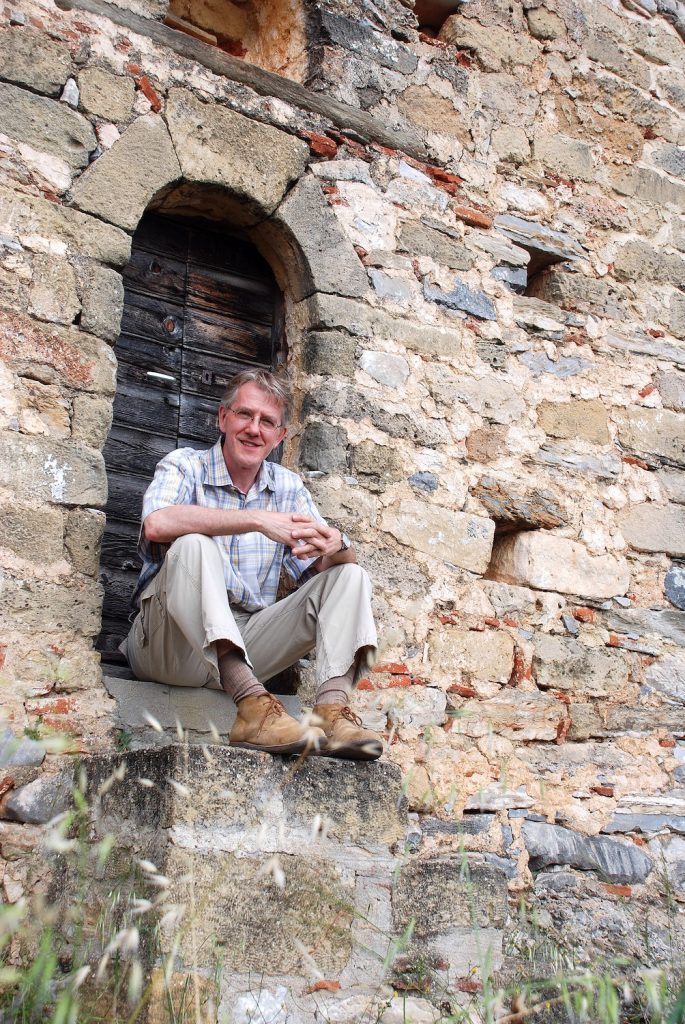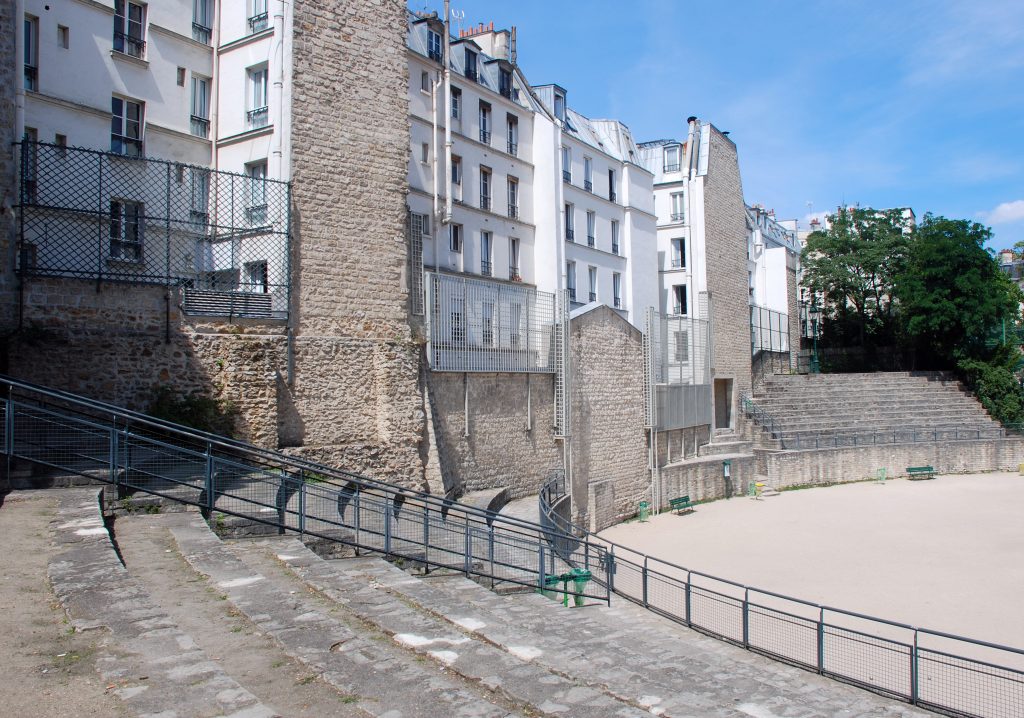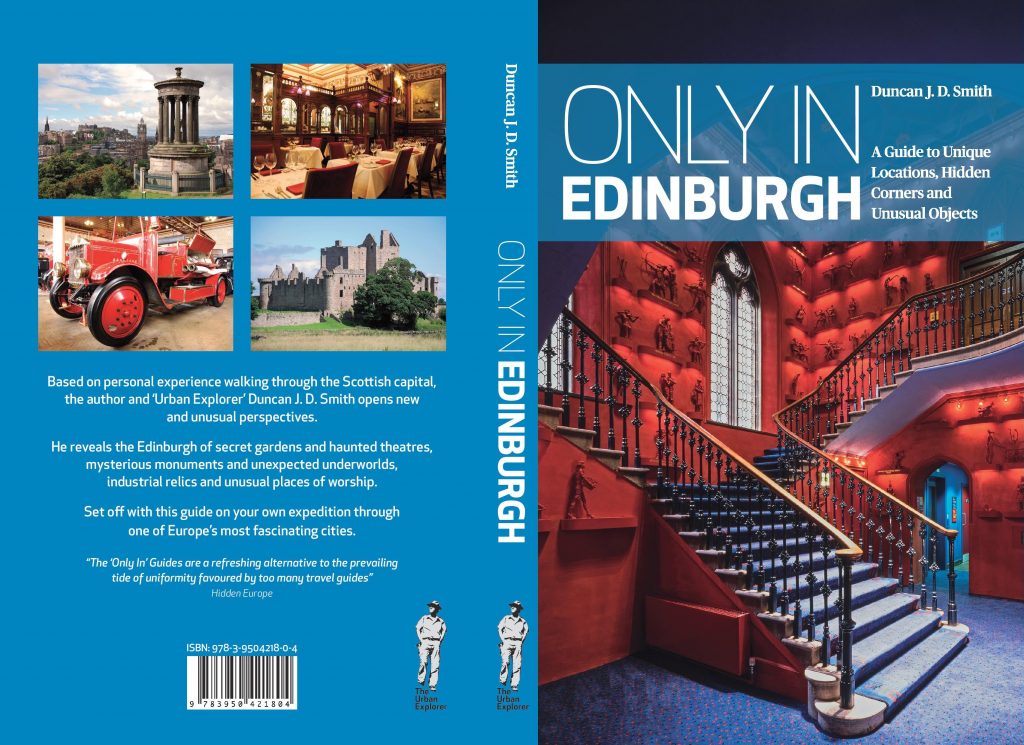In this exclusive interview, James Blake Wiener of Ancient History Encyclopedia (AHE) speaks to acclaimed travel writer, historian, and photographer Duncan J.D. Smith about the unusual perspectives he shares in his Only In Guides. Reveling in hidden gems, abandoned ruins, and little-known museums, Duncan J.D. Smith’s travel guides of major European cities are filled with fun bits of history and archaeology.
JW: Duncan J.D. Smith, thanks for speaking with me today. Welcome to Ancient History Encyclopedia!
Where, when, and how did the “travel bug” first bite?
DS: Thank you for inviting me to this interview, James! The travel bug probably first bit me in the early 1960s, when I was just old enough to walk. I lived with my parents in the north of England and distinctly remember venturing to the end of our long back garden. There I found an old wall, one much older than the 1930s-era semi-detached house in which we lived. It turned out to be a reused 19th-century field wall, and I can still picture the old gateposts embedded in it like ancient obelisks. This was my first brush with both travel and history.
A decade later, my adventurous mother chose Tangier in Morocco for our first foreign family holiday. It was quite a daring choice at the time I think. The city’s souk and Kasbah were an assault on my undeveloped senses and represented my first real encounter with a non-European culture. The trip left a deep and lasting impression on me. Oddly, however, I felt no immediate need to abandon England for warmer more exotic climes like some travelers do. Rather, I learned quickly that everywhere has its own story to tell and a potential adventure lies on every doorstep. I have since taken journeys to places as diverse as Sri Lanka and even Syria, but I still find trips around Britain no less enlightening. As Proust famously remarked “The real voyage of discovery consists not in seeking new landscapes, but in having new eyes.”
“Walk whenever possible in cities and always look upwards and down, not just straight ahead. Evidence for our past is everywhere, but so often it lies beyond the shop fronts. A street name high up on a wall might bear witness to some forgotten human activity, whilst a pavement slab concocted from a reused gravestone might recall a long-lost cemetery. To my mind, history should be an adventure — one best experienced on location and in the fresh air. Under such conditions, finding these signposts to the past can really be exhilarating.” ~Duncan J.D. Smith

Duncan J.D. Smith’s ever growing “Cabinet of Curiosities.” (Photo: Courtesy of Mr. Duncan J.D. Smith.)
JW: Is it true that you opened a museum at the age of 11? I know that you studied ancient history and archaeology at Birmingham University, but have they remained topics of interest?
DS: Indeed, it is true. As a young boy, my maternal grandfather, a retired bank manager and amateur archaeologist, used to take me on country walks during the summer holidays. He was the first to point out to me the signposts to the past that lie hidden in the landscape: A fossilized sea creature in the middle of a field, a shard of Roman pottery, and a fragment of medieval drainpipe. For me, such finds have a magic about them despite having little intrinsic value. Others must have thought so too because the museum I installed in my parents’ cellar was always popular with passers-by.
These days I still keep a couple of well-stocked “Cabinets of Curiosities” in my office, which I enjoy opening up for interested visitors. And I still find myself returning from travels today with something new to add to them. Most recently, I acquired an old prayer book from a priest I met near the ancient site of Axum in northern Ethiopia. Each goatskin page is handwritten carefully in Ge’ez (the written form of Amharic). So, yes, history and archaeology are still topics close to my heart.

Duncan in front of the ghost town of Vathia in Greece. (Photo: Courtesy of Mr. Duncan J.D. Smith.)
JW: For a number of years, you worked in the publishing sector. In your opinion, what makes the best travel writing?
DS: I am a guidebook writer by profession, and so I am always reading other author’s guides. But what I really enjoy when relaxing is classic travel writing, that is travelers’ accounts of their own journeys. The genius loci they provide is inevitably subjective but can act as a useful sounding board for one’s own emotions when arriving in a new place.
My long-time favorites are Patrick Leigh Fermor, notably the two works describing his walk through Europe in the 1920s (A Time of Gifts and Between the Woods and the Water), and Bruce Chatwin, who made travel writing fashionable again in the 1980s with his In Patagonia and The Songlines. As gold draws a magpie’s eyes, so both these writers were attracted by local legends, living traditions and colorful eccentrics, and they have inspired me greatly in my own travel writing. It is perhaps telling that collections of their letters are no less fascinating than their “official” works.
Just last year, I made a tour of the Mani — a rugged area of the southern Greece renowned for its crumbling tower houses and Byzantine chapels — and was fortunate enough to be given access to Leigh Fermor’s former home near the village of Kardamyli. A cross between a villa and a monastery, it contains a magnificent lounge-cum-library overlooking the sea, which the poet John Betjeman described as “one of the rooms of the world.”
JW: I discovered your Only In Guides while planning a trip to Zürich. I was impressed with the way in which you weave guided stories about Zürich’s hidden gems and history so seamlessly.
What provided the catalyst for the creation of such a series? Was this the kind of guidebook that you had always wanted to write with independent travelers in mind?

These city tales from unusual perspectives provide independent travelers with great memories. They are perfect for those who want to escape the crowds and set out on their own urban expedition. (Photo: Courtesy of Mr. Duncan J.D. Smith.)
DS: I appreciate you providing such positive feedback. As a self-employed writer, there is no greater compliment than a reader approving of and most importantly understanding your work. The catalyst for my Only In Guides dates back to the mid-1990s, when I wrote a handful of local history guides with my late father, Trevor. After a life spent working in libraries, he taught me the value of finding a literary niche for oneself. In our case, this was to relate the history of a place not through its famous sights but through its hidden corners. These unsung locations often speak just as eloquently — but without the trappings of mass market tourism. Our aim was to encourage readers to discover such places for themselves, to experience the tangible sense of history they offer, and to thereby take away a more indelible memory.
So, yes, when in 2003 it came to creating my Only In Guides, I definitely had independent cultural travelers as my target audience. It was in this year incidentally that I had the opportunity to live abroad for the first time, something I had long dreamed about, but I had not got around to doing. Love took me to Vienna, Austria, a grand capital city with much to offer both the travel writer and the urban explorer. Having cut my ties with England, where I had worked in travel publishing (but only on the sales side), I now had the opportunity to write my own guidebooks. I set off with camera and pen to explore the city within days of arriving and a year later, Only in Vienna was on the bookshelves.
JW: You have published city guides on Berlin, Budapest, Cologne, Hamburg, London, Munich, Paris, Prague, Vienna, and Zürich; next month, a new title covering Edinburgh will be released. Which other cities would you like to cover? Will you expand coverage to Africa, Asia, or the Middle East?

Duncan sitting on the steps of the Church of Agios Nikolaos in Greece. (Photo: Courtesy of Mr. Duncan J.D. Smith.)
DS: I am a real one man band: Author, photographer, and publisher all rolled into one. There is only so much I have been able to achieve in the last 13 years since each book takes up to 18 months to create. But I do have a “to do” list, which is as long as my arm and growing longer. In terms of European destinations, I quite fancy writing about Krakow, Poland and the Baltic capitals, and I have long had a thing about Trieste, Italy. My American distributor recently suggested I consider something for the North American market, so perhaps a volume on Boston, Massachusetts should join the list. The prospect of writing on Native American archaeology would be quite a change to the Habsburgs and Art Nouveau!
I have also dreamed of creating guides to cities such as Istanbul, Cairo, Dubai, and Shanghai. Of course, there are more mundane issues to take into account before launching off on such projects. Common sense dictates that suitable distribution would need to be in place first, and there should be enough bookshops to sell the finished product. Politics is an important factor too these days. It would be unfortunate to write a wonderful guide to the back streets of a city that no-one dared visit!

The Roman ruins of Arènes de Lutèce, which are located in the middle of Paris. (Photo: Courtesy of Mr. Duncan J.D. Smith.)
JW: You go out of your way to cover that which is unfamiliar and ancient in your Only In Guides. Do you have a favorite “ancient” spot in the cities you have covered thus far? If so, which one(s), and why?
DS: To answer this question, please allow me to quote from the three cities I have most recently written about: Paris, London, and Edinburgh. In Paris, I was delighted to find impressive vestiges of the city’s Roman past still in existence. These included chunks of town wall beneath the forecourt of Notre Dame de Paris, parts of a bath building incorporated into the Musée de Cluny, and remains of an amphitheater unearthed during roadworks in 1869 CE: Arènes de Lutèce. The latter stands in what is now a built-up area of the modern city; when I last visited, a group of locals were playing boule where gladiatorial events were once staged. The sense of continuity in the landscape was tangible.
In London, I made a fascinating walk from Hampstead in the north down to the Thames, following the course of the lost River Tyburn. Of course it is not really lost, just culverted, but it is remarkable how the river’s serpentine course can still be followed in watery street names, curving streets and gurgling sounds beneath innocent-looking manhole covers. For those interested, there are a handful of “lost” rivers in London and each offers a unique way of exploring the city.
For my latest book, Only in Edinburgh, I, like all visitors, was inexorably drawn to Edinburgh Castle. With evidence for human activity dating back to the Bronze Age, it is where the city’s story really begins. But just in front of the main entrance, over a parapet wall, is something extraordinary that most visitors miss: A rune stone. The so-called “Ramsingarde rune stone” was carved in what’s present-day Sweden around 1040 CE and acquired by an Edinburgh merchant in Stockholm in 1787 CE. He shipped it back to Edinburgh and gifted it to the Scottish Society of Antiquaries, which installed it outside the castle. That so few people are aware of it, even various locals I asked, only adds to the thrill of discovering it for oneself. It is exactly the sort of thing I like to include in my guides.

The traveler can explore Edinburgh’s volcanic geography, ancient closes, and architectural modernism with this new guide to the Scottish capital. To be published November 2016. (Photo: Courtesy of Mr. Duncan J.D. Smith.)
JW: If there is one thing that travelers should keep in mind as they plan for a trip, what should it be?
DS: Walk whenever possible in cities and always look upwards and down, not just straight ahead. Evidence for our past is everywhere, but so often it lies beyond the shop fronts. A street name high up on a wall might bear witness to some forgotten human activity, whilst a pavement slab concocted from a reused gravestone might recall a long-lost cemetery. To my mind, history should be an adventure — one best experienced on location and in the fresh air. Under such conditions, finding these signposts to the past can really be exhilarating. I hope that I can encourage readers to set off on their own urban expeditions through my Only In Guides.
JW: Duncan, I have enjoyed this conversation. I am looking forward to reading and using more of your travel guides in the future. Thanks so much.
DS: I have very much enjoyed answering your questions and would like to thank you for interest in my work. Happy exploring!

Mr. Duncan J.D. Smith
Born in Sheffield, England in 1960, Duncan J.D. Smith first got the history bug when his grandfather revealed the grave of a Roman soldier to him in his back garden. Aged just 11, he opened his own private museum before going on to read Ancient History and Archaeology at Birmingham University. His European findings are being published in a ground breaking series of guidebooks – the Only In Guides – designed specifically for the purpose and published under Duncan’s own Urban Explorer imprint. Volumes on Berlin, Budapest, Cologne, Edinburgh, Hamburg, London, Munich, Paris, Prague, Vienna, and Zürich have been published. These city tales from new perspectives provide independent travelers with unforgettable memories. The series has garnered considerable press acclaim, with sales to date in excess of 120,000 units. Duncan divides his time between England and Central Europe. He is a Fellow of the Royal Geographical Society, and he is also a member of the British Guild of Travel Writers.
Headline Image: A view of old Dubrovnik, Croatia. (Photo: Courtesy of Mr. Duncan J.D. Smith.)
All images featured in this interview have been attributed to their respective owners. Images lent to AHE by Mr. Duncan J.D. Smith have been done so as a courtesy, and we thank him warmly for his generosity. Interview edited by James Blake Wiener for AHE. Unauthorized reproduction is strictly prohibited. All rights reserved. © AHE 2016. Please contact us for rights to republication.